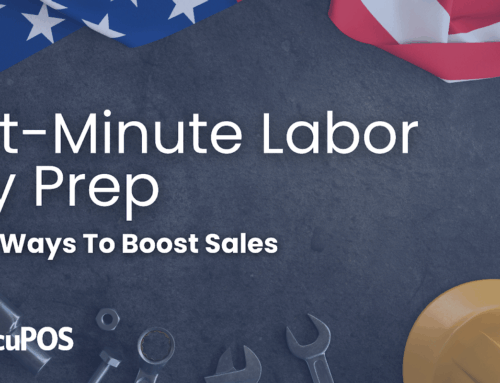Sure, small businesses are facing an uphill battle against major chains and online giants like Amazon and Walmart. These large corporations have extensive resources, competitive pricing, and expansive supply chains, making it difficult for independent retailers to compete on price and convenience alone. However, small retailers have a unique advantage that big businesses often lack: the ability to provide personalized experiences, strong community connections, and a distinct brand identity. By leveraging these strengths and adopting smart strategies, small businesses can not only survive but thrive in an increasingly competitive market.
1. Create a Unique In-Store Experience
One of the biggest advantages small retailers have over big-box stores and e-commerce platforms is the ability to offer a personalized, engaging shopping experience. Consumers today don’t just want to buy products—they want a meaningful experience. Here’s how small businesses can create an inviting atmosphere that keeps customers coming back:
- Offer Exceptional Customer Service: Unlike large retailers, small businesses can build real relationships with customers. Train employees to provide knowledgeable, friendly service that goes beyond just making a sale.
- Create an Engaging Store Layout: Design a space that is inviting and easy to navigate. Consider offering product demonstrations, samples, or interactive displays that make shopping more enjoyable.
- Host Events and Workshops: From DIY classes to exclusive product launches, in-store events can foster community engagement and encourage repeat visits.
2. Build Strong Customer Loyalty
Loyal customers are the lifeblood of small retail businesses. While big corporations rely on volume and aggressive marketing, small retailers can create a loyal customer base by focusing on personalized engagement.
- Implement a Loyalty Program: Offer rewards, discounts, or exclusive perks to repeat customers. A well-designed loyalty program can encourage shoppers to return and spend more over time.
- Leverage Personalized Marketing: Use customer data to send targeted promotions, birthday discounts, and tailored recommendations based on past purchases.
- Engage on Social Media: Actively interact with customers through social media platforms by sharing behind-the-scenes content, responding to messages, and featuring user-generated content.
3. Compete Through Convenience and Technology
While small businesses may not have the resources to offer same-day delivery like Amazon, they can still improve convenience through technology and streamlined services.
- Offer Multiple Payment Options: Accepting digital payments, mobile wallets, and contactless payments can make transactions faster and more convenient for customers.
- Implement a Buy Online, Pick Up In-Store (BOPIS) Model: This allows customers to browse online and quickly pick up their purchases, combining the convenience of e-commerce with the immediacy of in-store shopping.
- Use an Integrated POS System: A modern point-of-sale system can help manage inventory, track customer preferences, and streamline operations, allowing for better service and efficiency.
4. Focus on Local and Ethical Shopping Trends
Consumers today are more conscious of where they spend their money. Many prefer supporting local businesses over corporate chains, especially when they feel their purchase has a positive impact.
- Highlight Local and Handmade Products: Emphasize what makes your store unique, such as locally sourced goods, handmade items, or eco-friendly products.
- Tell Your Brand Story: People love to support businesses with a compelling story. Share your journey, values, and commitment to the community through your website, social media, and in-store signage.
- Partner with Other Local Businesses: Collaborate with nearby shops or restaurants for cross-promotions, bundled deals, or community events that drive foot traffic to your store.
5. Leverage Digital Marketing Effectively
A strong online presence is essential for competing with big retailers. Small businesses should use digital marketing strategies to increase visibility and attract both online and in-store customers.
- Optimize for Local SEO: Ensure your business appears in local search results by optimizing your website with relevant keywords, claiming your Google Business Profile, and encouraging satisfied customers to leave reviews.
- Use Social Media to Build Engagement: Platforms like Instagram, Facebook, and TikTok can help showcase products, share promotions, and connect with customers on a personal level.
- Run Targeted Online Ads: Use geo-targeted ads to reach potential customers in your area, driving them to your store or online shop.
6. Offer Competitive Pricing Without Sacrificing Value
While it may be difficult to compete with major retailers on price, small businesses can win by offering unique value in other ways.
- Bundle Products for Added Value: Creating exclusive bundles or offering free gift wrapping can make purchases more appealing.
- Emphasize Quality Over Price: Educate customers on the superior craftsmanship, sustainability, or uniqueness of your products compared to mass-produced alternatives.
- Run Strategic Promotions: Instead of constant discounts, offer limited-time deals, referral bonuses, or seasonal sales to drive urgency and engagement.
Conclusion
Competing with big-box stores and e-commerce giants may seem daunting, but small retailers have significant advantages that large corporations can’t easily replicate. By focusing on customer experience, loyalty, convenience, and digital marketing, independent businesses can carve out a strong niche in their market. Success comes from leveraging what makes a small business special—authenticity, personalization, and community connections. With the right strategies, small retailers can not only withstand competition but build a thriving, loyal customer base that values their unique offerings.





